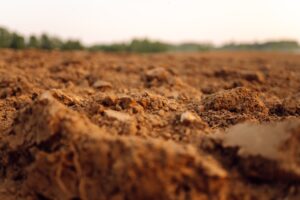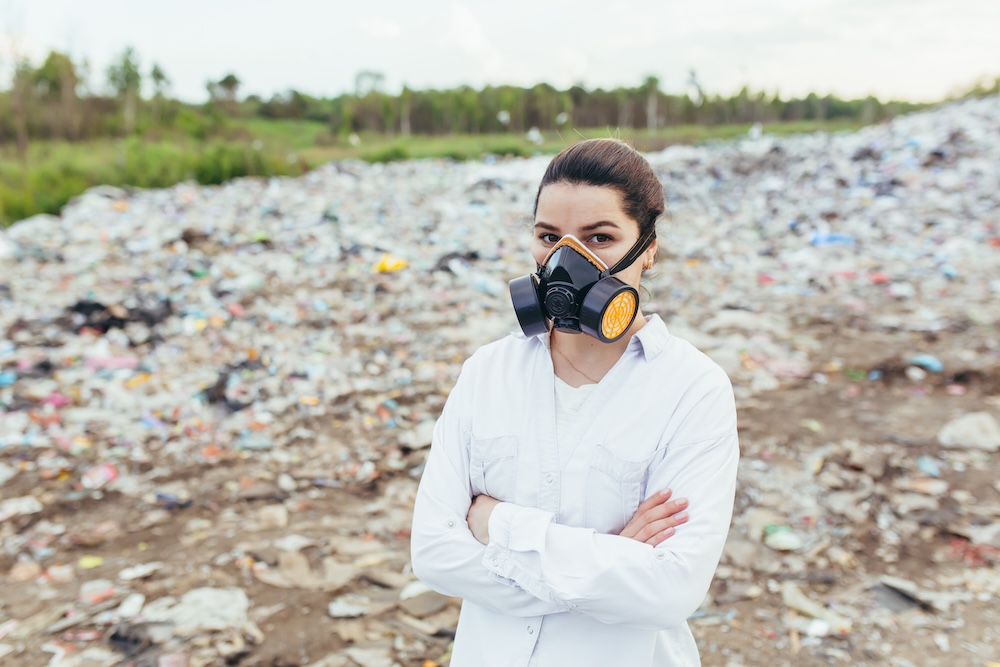What Is Land Pollution?
Land pollution is the degradation of the Earth’s surface due to the accumulation of waste, chemicals, and other harmful substances. This type of pollution harms soil health, disrupts ecosystems, contaminates water supplies, and poses risks to human and animal health. While often less visible than air or ocean pollution, land pollution has far-reaching consequences that impact food systems, public health, and biodiversity.
Major Causes of Land Pollution
Land pollution stems from a variety of human activities and industrial processes. Here are the leading contributors:
Solid Waste Disposal
One of the biggest drivers of land pollution is the improper disposal of solid waste, including:
- Household trash
- Packaging materials
- Non-biodegradable plastics
- Broken electronics (e-waste)
- Tires and batteries
Much of this waste ends up in overflowing landfills or illegal dumping grounds, leaching toxins into the soil.
Industrial and Chemical Waste
Factories, mining operations, and other industrial activities generate large amounts of waste that often contain:
- Heavy metals (like lead and mercury)
- Solvents and dyes
- Petroleum products
- Hazardous byproducts
When not disposed of properly, these materials seep into the ground and pollute the surrounding area.
Agricultural Practices
Modern agriculture contributes to land degradation through:
- Overuse of chemical fertilizers and pesticides
- Monocropping and soil depletion
- Animal waste accumulation from factory farming
- Improper disposal of agricultural plastics
Deforestation and Land Clearing
The removal of trees for farming, logging, or construction disrupts the natural balance of soil systems and increases erosion and runoff.
Landfills and Dumpsites
Traditional landfills often lack adequate liners and drainage systems. As waste breaks down, it releases leachate—a toxic liquid that can seep into soil and groundwater.
Effects of Land Pollution
Land pollution affects more than just the ground beneath our feet.
Soil Degradation
- Loss of nutrients essential for crop growth
- Disruption of microbial life vital to healthy ecosystems
- Decreased agricultural productivity over time
Water Contamination
Toxins from land pollution can leach into rivers, lakes, and underground aquifers, contaminating drinking water supplies.
Human Health Risks
Exposure to polluted land—especially near industrial sites or landfills—can cause:
- Respiratory problems
- Skin irritation and allergic reactions
- Increased cancer risk
- Developmental and neurological disorders in children
Wildlife Impact
Animals may ingest toxic substances or suffer from habitat loss as land becomes unusable or degraded.
Urban Blight
Litter, abandoned lots, and illegal dumping reduce property values, increase crime rates, and create unsafe living conditions in urban environments.
E-Waste: A Growing Land Pollution Crisis
Electronic waste, or e-waste, is one of the fastest-growing categories of land pollution. Improper disposal of devices like smartphones, TVs, and laptops introduces toxic substances such as:
- Cadmium
- Mercury
- Lead
- Brominated flame retardants
Less than 20% of global e-waste is formally recycled, with much of it ending up in developing countries, where it is improperly dismantled or burned.
Land Pollution and Climate Change
While land pollution is primarily a local issue, it contributes to climate change in several ways:
- Landfills produce methane, a potent greenhouse gas
- Deforestation reduces the planet’s ability to absorb CO₂
- Burning waste releases carbon and toxic gases into the atmosphere
How to Reduce Land Pollution
What Individuals Can Do:
- Reduce, reuse, and recycle materials whenever possible
- Compost organic waste instead of sending it to the landfill
- Avoid single-use plastics and packaging
- Safely dispose of batteries, electronics, and chemicals
- Buy second-hand or refurbished goods
What Communities Can Do:
- Create more accessible recycling and composting programs
- Organize community cleanups
- Promote education about proper waste disposal
- Incentivize businesses to adopt zero-waste packaging
What Governments Must Do:
- Enforce regulations on waste disposal and industrial pollution
- Ban harmful chemicals or non-biodegradable materials
- Invest in sustainable waste management infrastructure
- Monitor and remediate contaminated land sites
Innovative Solutions
New technologies and systems are helping combat land pollution:
- Bioremediation: Using microbes to clean contaminated soil
- Waste-to-energy: Converting non-recyclable waste into energy
- Circular economy models: Designing products with end-of-life reuse in mind
- Eco-bricks: Repurposing plastic waste as building material
Common Questions About Land Pollution
What is the most common form of land pollution?
Solid waste, especially plastic, is the most widespread and persistent form of land pollution globally.
How does land pollution affect agriculture?
Contaminated soil can harm crops, reduce yields, and introduce toxins into the food supply.
Are landfills still necessary?
Yes, but modern landfills with proper liners, leachate management, and gas capture systems are much safer than older versions.
What are signs of land pollution?
Discolored or barren soil, dead vegetation, foul odors, and nearby health issues in wildlife or humans may signal contamination.
Can land pollution be reversed?
With remediation, reforestation, and soil restoration efforts, many polluted sites can be rehabilitated—though some contaminants are difficult to remove completely.
Final Thoughts
Land pollution might be easy to ignore because it’s often buried, hidden, or out of sight—but its impact is all around us. From the food we grow to the water we drink, polluted land puts our health and ecosystems at risk. The good news? Much of this damage is preventable. By rethinking how we produce, consume, and dispose of goods, we can protect the soil beneath our feet and build a more sustainable future from the ground up.









Reader Interactions